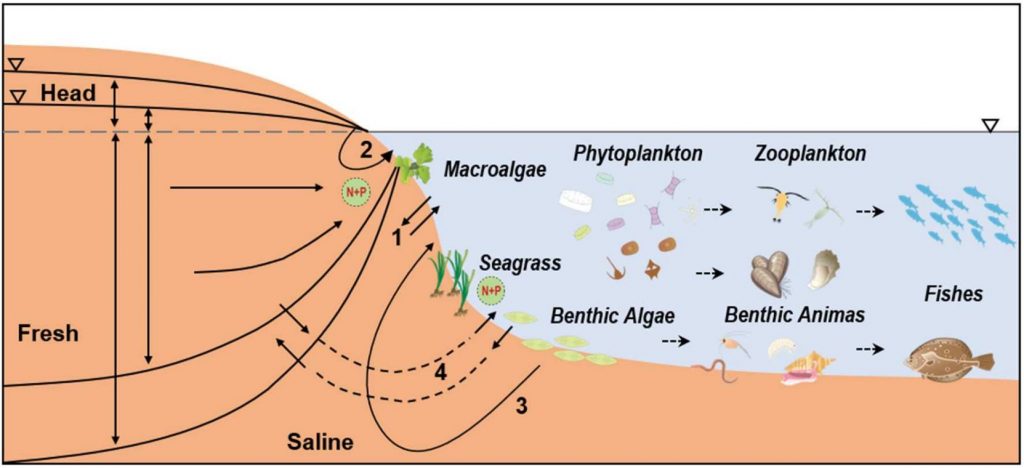About the Project
Land-sea interaction is the substantial part of the global water cycle where surface water and groundwater discharges are the most important controllers of the coastal nutrient budget. The nutrients and inorganic macro elements carried by these flows strongly influence the marine ecosystems and may cause variations in productivity and eutrophication. Therefore, considering their potential to impact main sectors such as tourism and fishing, they need to be carefully monitored and interpreted. The effects of surface waters are generally well understood and the monitoring systems needed have been established. However, groundwater movements have often been overlooked.
Submarine groundwater discharge (SGD) was described comprehensively by Burnett and others (2003) as “the flow of water through continental margins from the seabed to the coastal ocean, regardless of fluid composition or driving force”. This important mechanism has begun to be investigated in detail with the development of measurement techniques such as using radioisotope trace elements. A study for the entire Mediterranean basin using this approach found that SGD values could be up to 16 times the total river inputs (Rodellas et al., 2015). Furthermore, it is suggested that the nutrient input from SGD could be at least equal to or even higher than the amounts transported from the river and the atmosphere (Rodellas et al., 2015).

Figure 1: Biological production in coastal ecosystems based on nutrients supplied through SGD (Taniguchi et al., 2019).
The primary aim of the project is to better understand the importance of groundwater and material transport to the marine ecosystems water and nutrient budget relative to surface water transport. A systematic observation and budget analysis using radioisotope trace elements is combined with an interdisciplinary and coordinated approach to accomplish this goal, for the first time in the Eastern Mediterranean. The Cilician Basin was selected as the area of research taking into account its geographical significance, its unique nature and the knowledge available.
This project is funded by TUBITAK under the 1001 Program with the project number 120Y082.
References
Burnett, W. C., Bokuniewicz, H., Moore, W. S., & Taniguchi, M. (2003). Groundwater and pore water inputs to the coastal zone. Biogeochemistry, 66, 3–33.
Rodellas, V., Garcia-Orellana, J., Masqué, P., Feldman, M., Weinstein, Y., & Boyle, E. A. (2015). Submarine groundwater discharge as a major source of nutrients to the Mediterranean Sea. Proceedings of the National Academy of Sciences of the United States of America, 112(13), 3926–3930. https://doi.org/10.1073/pnas.1419049112
Taniguchi, M., Dulai, H., Burnett, K. M., Santos, I. R., Sugimoto, R., Stieglitz, T., Kim, G., Moosdorf, N., & Burnett, W. C. (2019). Submarine Groundwater Discharge: Updates on Its Measurement Techniques, Geophysical Drivers, Magnitudes, and Effects. Frontiers in Environmental Science, 7(October), 1–26. https://doi.org/10.3389/fenvs.2019.00141
Posted by submarinegroundwater discharge on 17.02.2021 under
